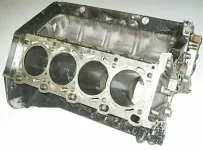Mercedes G classes are V8. For smaller stuff or sedans those I6 are good. We are talking about full size towing SUVs here. You have to start with a V8. Then discuss if it will be n/a or turbo. But do not take the V8 off the table for such a large application.
You mean like an F150 with a 3.5L or 2.7L v6? Does that underperform?
Very few owners will actually be towing…. Much fewer than even the 1/2 ton trucks everyone likes to crack on.
In any case, the turbo will likely have better towing performance with its low/mid torque.

